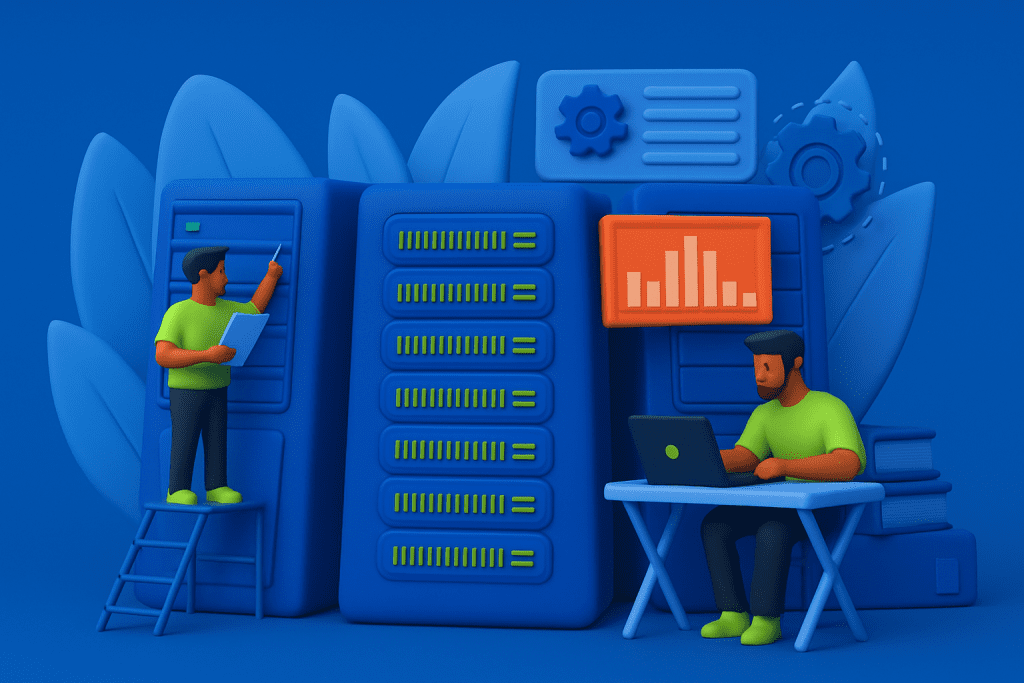cPanel and WHM (Web Host Manager) make shared hosting manageable at scale, but convenience can’t come at the cost of security. Because many customers share the same server, a single weak configuration or exposed service can jeopardize everyone. This guide walks you through a practical, link-free approach to securing cPanel and WHM: hardening access, isolating accounts, monitoring continuously, and building reliable recovery.
In shared hosting, dozens—or hundreds—of accounts live on one machine. Attackers target the weakest point: a reused password, an outdated plugin, or a misconfigured service. If an account is compromised, lateral movement is possible unless you isolate users, restrict privileges, and monitor aggressively. Your goal is layered defense: secure entry points, reduce attack surface, contain impact, and watch everything.
Secure Access to cPanel and WHM
Always use encrypted sessions and restrict who can even reach your login pages. Do not rely on “secret” URLs. Enforce encryption, second-factor prompts, and network-level controls.
Use encrypted ports only.
cPanel and WHM provide TLS by default on dedicated secure ports (for example, 2083 for cPanel and 2087 for WHM). Access them through your server’s hostname with TLS enabled. If a browser shows a certificate warning, install a valid certificate for the server hostname from WHM’s Service SSL section.
Enforce two-factor authentication (2FA).
Enable 2FA in WHM’s Security Center and require it for all reseller and user accounts. Time-based one-time passwords via authenticator apps materially reduce credential-stuffing risk.
Harden password policy and brute-force limits.
Set a strict password strength in the Security Center and enable cPHulk (the cPanel brute-force defender) with sensible thresholds. Combine this with connection throttles at the firewall.
Restrict management access by source IP.
Use Host Access Control or your firewall to allow WHM and SSH only from trusted office/VPN IPs. For example, with a host-based firewall you can allow a management CIDR and drop everything else. This simple step blocks the vast majority of automated login probes.
Prefer SSH keys over passwords.
Disable SSH password logins, require key-based auth, and use a non-default SSH port if operationally acceptable. Keep root login disabled and use sudo through a named admin user.
Keep the Stack Updated (OS, cPanel/WHM, Services)
Most compromises exploit known, fixed bugs. Turn on automatic updates for the operating system and for cPanel/WHM so security patches apply quickly. Use EasyApache 4 to keep Apache, PHP, and modules current; remove versions you no longer need. For PHP, run supported branches only, and assign per-account PHP versions through MultiPHP Manager to avoid pinning the whole server to an outdated runtime.
If you use third-party daemons (Redis, Memcached, Imunify, etc.), track their advisories and schedule regular maintenance windows for updates. Outdated extensions and web app plugins (not just system packages) are common breach vectors; audit them periodically.
Isolate Accounts and Limit Blast Radius
Account isolation is the single biggest determinant of shared-hosting safety. With proper isolation, one hacked site remains one hacked site—not a server-wide incident.
Jail users.
Enable CloudLinux with CageFS (or an equivalent chroot solution). Each account runs in a lightweight jail, preventing access to other users’ files, processes, /proc details, and potentially sensitive system paths. This dramatically reduces lateral movement.
Restrict shell access.
Disable shell for regular users unless absolutely required. If you must grant it, use a jailed shell and limit executable paths. Never grant compilers or development toolchains server-wide by default.
Enforce sane file permissions.
Use 755 for directories and 644 for files. Avoid 777 anywhere. Periodically scan for world-writable paths and correct them. Encourage users to deploy via SFTP with limited credentials.
Limit resources per account.
Use LVE (Lightweight Virtual Environment) to cap CPU, RAM, I/O, entry processes, and number of processes per user. Rate-limiting noisy neighbors protects everyone else and blunts denial-of-wallet attacks that exploit resource bursts.
Reduce the Attack Surface of Web Apps
Your security posture is only as strong as the applications your users run. Default-deny where you can and filter everything else.
Enable a web application firewall.
Turn on ModSecurity with a reputable ruleset (e.g., OWASP Core Rule Set). Tune false positives gradually; don’t disable broad classes of rules because of one noisy application—write targeted exclusions.
Run PHP safely.
Use PHP-FPM with per-user pools. Disable dangerous functions not required by typical apps; keep allow_url_fopen and remote includes in check. Ensure open_basedir constraints apply as appropriate for your environment.
Force HTTPS for sites and services.
Issue certificates via AutoSSL and redirect plaintext traffic to HTTPS. HSTS and modern TLS ciphersuites reduce downgrade risks and cookie theft.
Monitor, Detect, and Block in Real Time
Firewall + intrusion prevention.
Deploy a host firewall and pair it with Fail2Ban or cPHulk to ban IPs that fail logins repeatedly or trip ModSecurity rules. Keep ban timers balanced: long enough to deter, short enough to avoid locking out legitimate users who made mistakes.
Centralize and review logs.
Watch authentication logs, cPanel/WHM access logs, web server error/access logs, and mail logs. Consider forwarding logs to a central store so you can query across time and accounts. Look for spikes in 401/403/404s, sudden POST surges, or unusual user agents.
Automate malware scanning.
Schedule daily scans of user home directories. Quarantine first, notify owners, and provide a clear unquarantine workflow. Catching webshells early often prevents a persistent foothold.
Security Advisor as a weekly ritual.
Run the built-in Security Advisor regularly and action its recommendations. Treat it like a standing checklist.
Backups, Recovery, and Ransomware Readiness
Assume breach and plan recovery. Configure automated, versioned backups for accounts and system configs. Store copies off-server and off-network. Encrypt them at rest and test restores quarterly. A backup you haven’t restored is a backup you don’t have. For high-risk tenants, consider shorter RPOs (Recovery Point Objectives) and more frequent snapshots.
Train Users—It’s Part of Security
Many incidents start with weak passwords, outdated plugins, or infected laptops. Provide customers simple guidance: keep CMSs and plugins current, avoid null themes, use strong unique passwords and 2FA, and scan local machines. Offer a short onboarding document and a quarterly reminder. The more your users know, the fewer fires you’ll fight.
Quick Configuration Snippets (Safe to Copy)
Strong SSH + key-only login (example):
# /etc/ssh/sshd_config
PermitRootLogin no
PasswordAuthentication no
ChallengeResponseAuthentication no
PubkeyAuthentication yes
AllowUsers adminuser
# optional: non-default port if your compliance permits
# Port 22222
Reload SSH after validating access from a second session.
Fail2Ban jail for SSH (baseline):
# /etc/fail2ban/jail.d/sshd.local
[sshd]
enabled = true
port = ssh
filter = sshd
logpath = /var/log/secure
maxretry = 4
findtime = 10m
bantime = 1h
Typical file permissions reset for one account:
find /home/USERNAME/public_html -type d -exec chmod 755 {} \;
find /home/USERNAME/public_html -type f -exec chmod 644 {} \;
ModSecurity: enable and start with a strict-but-sane baseline.
Enable the ruleset, log in DetectionOnly for a week to gather data, then switch to Blocking for high-confidence rules while you tune exceptions per app.
Security decays without attention. Set a cadence: weekly Security Advisor review; monthly OS and service updates; quarterly restore test; biannual penetration test or at least a misconfiguration audit. Track these as tickets so nothing is “best-effort.”
Shared hosting can be secure when you treat it like a system, not a set of one-off fixes. Encrypt management access, enforce 2FA and strong passwords, isolate every account, harden runtimes, monitor continuously, and plan recovery as if you’ll need it. Done consistently, these practices keep your cPanel/WHM servers stable, trustworthy, and ready for growth—without relying on any mystery links.













